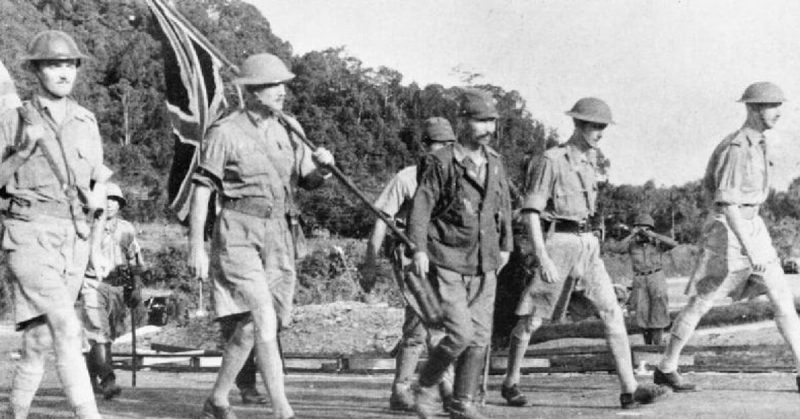The battle for Singapore, fought from the 8th to the 15th February 1942 was a bluff by the Japanese and a complete rout of the Allied Forces consisting of British, Indian and Australian troops. This battle led to the surrender of the Allied forces resulting in 80,000 Allied troops being taken prisoner, and prompting the British Prime Minister Winston Churchill to call this ignominy the “worst disaster” and “largest capitulation” in British military history.
The Allied forces fought the last days based at Fort Canning and on the morning of 15th February, the Japanese had broken through the last line of defense, and the Allies were running out of food and ammunition. The commander of the Allied Forces, Lieutenant-General Arthur Ernest Percival, held a meeting in the conference room at the underground bunker, known as the Battlebox, at Fort Canning with all his senior commanders.
The options they had were to launch a counter-attack to retake the water reservoirs and food supplies or surrender to the Japanese. Following a heated debate the decision was made to surrender, and Percival carrying the Union Jack as well as a white flag met the Japanese Commander General Tomoyuki Yamashita, who demanded the complete surrender of all Allied forces.
The Japanese raised their flag over Singapore, which they renamed Syonan-To, and 80,000 men became prisoners of war for the next 3 and a half years, until on the 12th September 1945, following Japan’s surrender, Singapore was returned to British rule with the civilian population having suffered badly. At this time Fort Canning and its underground bunker was looted by the civilian population, so it was sealed and forgotten.
In 1988 the underground communications center was rediscovered and with partial restoration, in 1997 it was opened as a museum. A visit to this bunker, hidden behind a nondescript door hidden on a hillside is a peek into the horrendous situation in which the Allied forces found themselves. The bunker is built nine meters underground, and the ventilation was extremely poor. The Allied command must have sweltered in the musty air as the inefficient ventilation tried to cope with humid conditions and too many people in too small space.
Gabriel Tay, a guide to the Battlebox Museum runs tours through the bunker explaining the country’s wartime history; what happened and why the Allied forces surrendered. Walking through the small rooms within the bunker, amid photographs of great Pacific battles, are signs on the wall exhorting the men to “Keep it under your hat! Careless talk costs lives”, and a reminder that “Hitler will send no warning so always carry your gas mask,” and a bleak request to “Smash Japanese Aggression.” Every effort has been made to ensure period accuracy, but it is the poignant figures of Percival and his senior commanders arranged in the ‘surrender conference room’ that bring home the desperate plight that faced these men. Another figure is seated at the old telephone exchange and in the signal room, that would have connected the bunker to London, and there stands the old communications equipment that would have received coded messages that were passed along to the cipher room for decoding.
This museum is constantly being upgraded, and as artifacts are uncovered, they are added to make this as full an experience as possible. One of the books available in the shop within the visitor center, ‘Secrets of the Battlebox’, written by Romen Bose, sums up this infamous period when it was thought Singapore was safe from invasion,
“It was the immense bureaucracy and red tape of the civil administration and their lack of willingness to prepare fully for the war that led to the huge suffering of the local population and the total unpreparedness for the Japanese bombings and attacks.”
Perhaps the lessons that history can teach us will be better understood by a tour through this museum.
